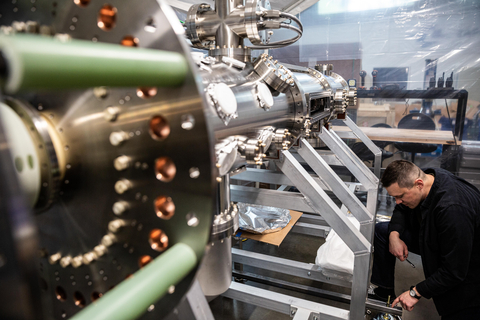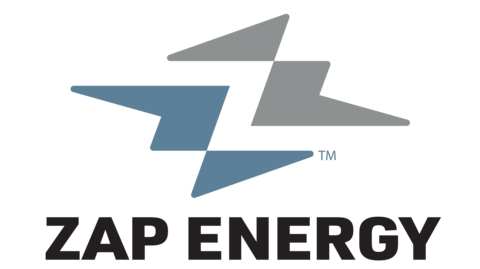Zap Energy Advances Fusion Reactor Technology With First Plasmas in Next-Generation Device and New Funding
Zap Energy Advances Fusion Reactor Technology With First Plasmas in Next-Generation Device and New Funding
- First plasmas in FuZE-Q and $160 million in Series C funding mark major milestones for Zap Energy.
- The company is developing Z-pinch fusion as a carbon-free energy source that is much smaller and simpler than other fusion approaches.
SEATTLE--(BUSINESS WIRE)--Zap Energy has officially marked a critical engineering milestone by creating the first plasmas — the hot, dense form of matter found in stars — in FuZE-Q, their new prototype designed to reach the long-sought target of Q=1, where the process of nuclear fusion inside a plasma yields more energy than was consumed to create it.
The first plasmas in FuZE-Q come on the heels of progress last year showing the company’s innovation of sheared-flow stabilization continues to extend the lifetime of Z-pinch plasmas at 500 kiloamps (kA) of current.
To accelerate the pace of bringing its technology to market, the company is also announcing the close of $160 million in Series C funding.
No magnets required
The key to Zap Energy’s success is a breakthrough method of confining and compressing plasma called a sheared-flow-stabilized (SFS) Z pinch. In Z-pinch fusion a line of plasma carrying an electrical current generates its own magnetic field that “pinches” the plasma until it’s hot and dense enough for fusion to occur. SFS then helps sustain the plasma by suppressing instabilities that have plagued historical attempts at Z-pinch fusion.
Compared to prevailing approaches to fusion, Zap Energy’s technology is incredibly elegant and does not require any superconducting magnets or high-powered lasers. A simpler method of producing fusion means an opportunity to build smaller, less complex, more scalable systems that will more quickly bring fusion energy to the grid.
The conceptual basis for the technology was developed at the University of Washington (UW) together with collaborators from Lawrence Livermore National Laboratory. UW professors Uri Shumlak and Brian A. Nelson teamed up with entrepreneur and investor Benj Conway to co-found Zap Energy in 2017 to accelerate and ultimately commercialize the research. The company now has over 60 employees based in Seattle, Everett and Mukilteo, Washington.
“Z pinch has long been an appealing way to achieve nuclear fusion, but for many years researchers considered Z-pinch’s plasma instabilities to be an insurmountable challenge,” says Shumlak, who serves as Zap Energy’s Chief Science Officer and is also a UW Professor of Aeronautics & Astronautics. “We’ve shown through both simulation and experiment that sheared flows can stabilize fusion plasmas, and that the stability should extend to a commercially viable scale. The Zap Energy team has made rapid progress since this technology moved out of the lab, especially with recent team and investment growth.”
Fusion conditions
The more current used to make a Z pinch, the hotter and denser it will be, so climbing to higher and higher currents is a key part of advancing Z-pinch fusion. Having reached 500 kA and the limits of its current hardware capabilities this past fall, Zap Energy will now begin operation on its next-generation platform, known as FuZE-Q, and install a cutting-edge power bank later this year. The new system will be designed for the levels of current needed to reach an equivalent point of a scientific energy breakeven, where the energy coming out of the Z pinch will be greater than the energy put in to create it. Scientific modeling predicts the Q=1 equivalent point will occur around 650 kA of current.
“FuZE-Q is the fourth generation of Z-pinch device that we’ve built and is undoubtedly the most ambitious,” notes Nelson, Chief Technology Officer. “We designed it to be versatile, resilient and tunable in lots of ways that will be critical as we ramp to higher currents, temperatures and densities.”
“To be a practical energy source, we need to go well beyond Q=1, but if you want to get fusion on the grid in time to make a difference to the planet, then the ability to iterate quickly on a small, cheap platform, is absolutely vital,” says Conway. “We can design, build and test systems at a much faster pace than other approaches and we are working in parallel on technology that we are going to need on the other side of breakeven.”
Series C
Following a $27.5 million Series B in May 2021, Zap Energy’s $160 million Series C funding round was led by Lowercarbon Capital with participation by a new set of investors that includes Breakthrough Energy Ventures, Shell Ventures, DCVC and Valor Equity Partners. Existing financial and strategic investors who have backed the new raise include Addition, Energy Impact Partners (EIP) and Chevron Technology Ventures.
“The team at Zap are getting closer to mass-manufacturable fusion reactors small enough to fit inside a garage,” remarks Clay Dumas, a founding partner at Lowercarbon. “From powering heavy industry to remote communities, this tech could go a long way toward de-fossilizing our economy with energy that’s straight up cheaper, cleaner and more abundant.”
“We believe fusion technologies could be one of the most important developments for the benefit of the climate and society more broadly,” adds Carmichael Roberts, Breakthrough Energy Ventures. “Zap’s approach building on decades of peer-reviewed research in Z pinches represents another critical step towards progressing fusion as a viable carbon-free energy option, and we’re looking forward to working with them as they continue on the path towards commercialization.”
About Zap Energy
Zap Energy is building a low-cost, compact and scalable fusion energy platform that confines and compresses plasma without the need for expensive and complex magnetic coils. Zap’s sheared-flow-stabilized Z-pinch technology offers the shortest potential path to commercially viable fusion and requires orders of magnitude less capital than traditional approaches. Zap Energy has over 60 employees in two facilities near Seattle and is backed by leading financial and strategic investors. Visit Zap online at zap.energy.
Contacts
Andy Freeberg
Head of Communications
media@zapenergyinc.com

